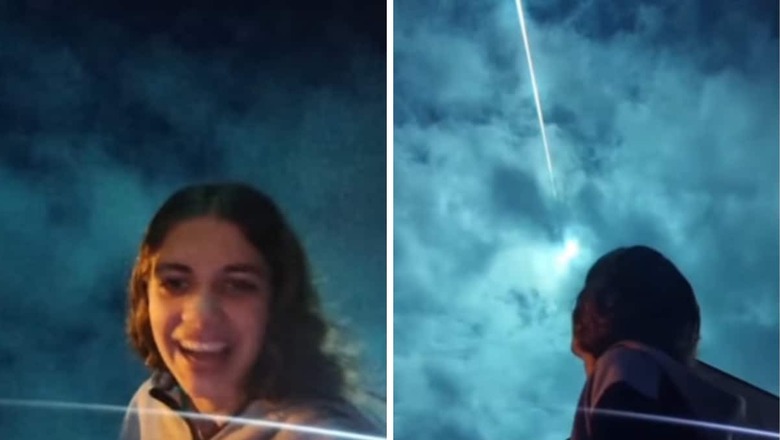
views
Videos of an amazing spectacle spotted in the night skies above Spain and Portugal have gone viral on social media. For around seven seconds, a dazzling neon blue light was visible streaming across the atmosphere as the heavenly object passed overhead. According to the European Space Agency (ESA), the meteor seemed to be a fragment of a comet that broke off and passed through Earth’s atmosphere at a height of around 35 miles. Many people recorded the event and posted it on social media, but one particular clip stands out in particular. The video, which has stunned many, resembles a scene edited on a green screen from a sci-fi movie.
A girl is spotted sitting beneath the stars, about to record a video or take a selfie, when the sky behind her abruptly turns blue, capturing the moment on camera. As she glances up at the now-blue-lighted skies, her smile changes to one of surprise. For as long as the meteor remains in her line of sight, she continues to stare at it. The surrounding area’s colour was changing in the meantime, creating the illusion of a sci-fi setting.
The video was shared on Instagram with the caption that read, “I am completely blown away by this, we caught on live what we least expected.”
View this post on Instagram
The video had 821,000 views at the time of reporting with the comments section in awe.
A user wrote, “She recorded the best video of her life.” Another said, “No movie could have done it better… what a moment for a lifetime!!” A user commented, “Imagine having a record of these in your life? It’s more than just “rare”, it’s almost UNPROPHABLE. What are the odds that you are filming yourself upside down, on the street, and a meteorite passes over you? I SWEAR!”
Meteorites are space rock fragments that are circling around the universe. Occasionally, they will break through Earth’s atmosphere and strike the planet’s surface. The majority of meteorites come from asteroids, which are stony things in the asteroid belt between Mars and Jupiter, although some also come from comets.
According to NASA, if a meteoroid strikes earth’s atmosphere or that of “another planet, like Mars,” it accelerates significantly and starts to burn up, giving the appearance of a fireball. As per the ESA, there was little chance that any meteoric debris would reach Earth.




















Comments
0 comment